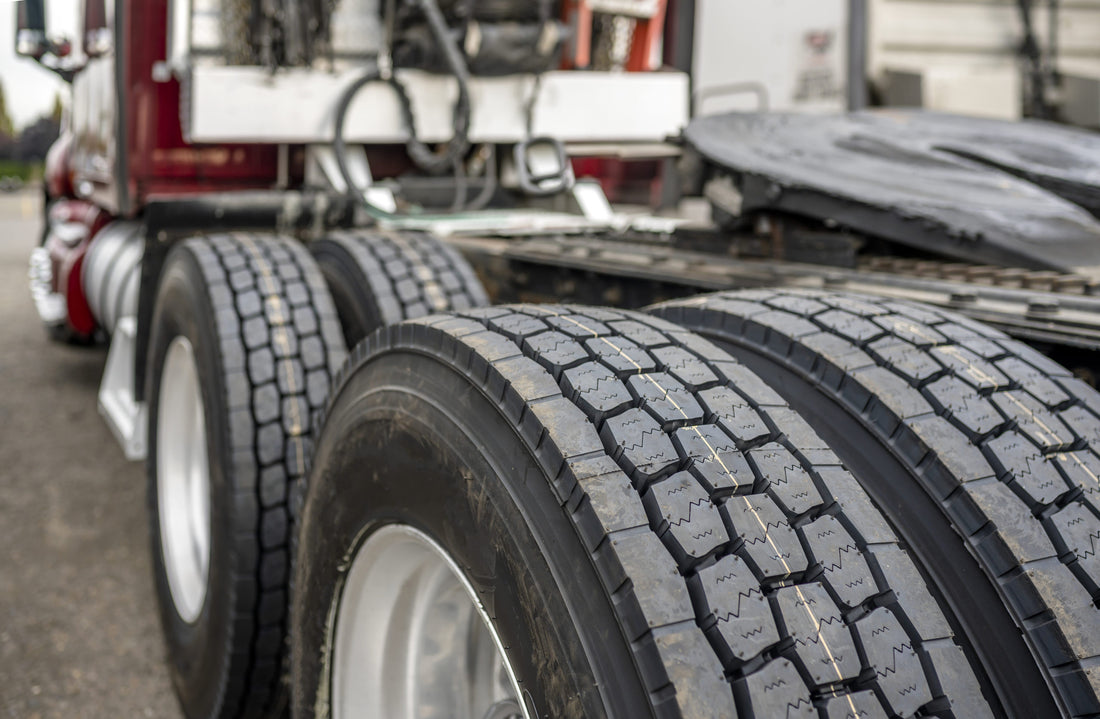
CVSA’s Brake Safety Week 2021 Starts This Week
Inspectors will be on the lookout for faulty brakes this week.
From now until August 28th, law enforcement officials in the U.S., Canada, and Mexico will perform brake inspections as part of CVSA’s Brake Safety Week. This campaign is an important week for truck drivers because properly functioning brakes are critical for safe driving. The truck’s brakes can withhold tough conditions, but brakes are inspected so your truck can perform well throughout its life.
Read more to find out what the week is about, what law enforcement officials will be inspecting, and how to prepare for it.
What is Brake Safety Week?

This is a campaign hosted by CVSA to conduct roadside inspections and identify brake violations on commercial motor vehicles. If your vehicle has any violations, it will be placed out-of-service (OOS) until they are corrected.
If you pass the inspection during the Level I or V inspection, you will receive a CVSA decal.
What Will Officials be Inspecting?
They’ll look at your brake system and its components, as well as its maintenance, operation, and performance. Inspectors will pay attention to the brake hoses and tubing which must be without leaks, appropriately flexible, and be free of any other type of damage.
According to CVSA, the inspector will:
- Check for missing, non-functioning, loose, contaminated or cracked parts on the brake system.
- Check for S-cam flip-over.
- Listen for audible air leaks around brake components and lines.
- Check for improper connections and chafing of air hoses and tubing.
- Ensure slack adjusters are the same length (from center of S-cam to center of clevis pin) and the air chambers on each axle are the same size.
- Ensure the air system maintains air pressure.
- Look for non-manufactured holes (such as rust holes or holes created by friction) and broken springs in the spring brake housing.
- Mark and measure pushrod travel.
- Inspect required brake system warning devices, such as anti-lock braking system malfunction lamp(s) and low air-pressure warning devices.
- Inspect the tractor protection system, including the bleed-back system on the trailer.
- Ensure the breakaway system is operable on the trailer.
In addition to checking your brake system, they may also look at other components so your vehicle is in top-notch shape. This can include:
- Cargo securement
- Coupling devices
- Driveline/driveshaft components
- Driver’s seat (if it’s missing)
- Exhaust systems
- Frames
- Fuel systems
- Lighting devices
- Steering mechanisms
- Suspensions
- Tires and wheels
- Van and open-top trailer bodies
- Rims and hubs
- Windshield wipers
Why Does Brake Safety Week Occur Every Year?

Although commercial motor vehicles' brakes can hold up against tough conditions, you must inspect them often. Your vehicle's brake system needs to be maintained carefully to perform well throughout its life.
Brake-related violations make up the largest percentage of all out-of-service violations during roadside inspections. If the brake system is poorly maintained, this can reduce the braking capacity and stopping distance of trucks and buses. This poses a serious risk to drivers!
Back on May 19th, 2021, CVSA presented data proving why a week is devoted to identifying brake violations on commercial motor vehicles. Brake violations and removing vehicles with out-of-service brake violations exist because:
- Brake system and brake adjustment violations accounted for more vehicle violations than any other vehicle violation category, accounting for 38.6% of all vehicle out-of-service conditions, during last year’s three-day International Roadcheck.
- “Brake system” was the third most cited vehicle-related factor in fatal commercial motor vehicle and passenger vehicle crashes, according to the Federal Motor Carrier Safety Administration’s (FMCSA) latest “Large Truck and Bus Crash Facts” report.
- Brake-related violations accounted for eight out of the top 20 vehicle violations in 2020, according to FMCSA’s Motor Carrier Management Information System.
- During last year’s Brake Safety Week, 12% of the 43,565 commercial motor vehicles inspected were placed out of service for brake-related violations.
How to Prepare for the Inspection
Inspect your brake system and all brake components regularly during your pre and post-trip inspection. Performing this can help you identify any issues and feel confident that your vehicle is in safe operating condition.
We have a list of items below that you can visually check your brake system on a regular basis:
- Celvis pins
- Slack adjuster
- Air lines
- Air brake chamber
- Cotter pins
- Brake hoses and tubing
The CVSA has a FAQ sheet that answers common questions about your brake system that you can learn more about. They also have a brake inspection checklist which is a great way for you to stay prepared for your roadside inspection!
At US Cargo Control, We Care About Your Safety
Just like how you would practice being a safe driver, inspecting your brakes is equally as important. If you continue to inspect your vehicle's components regularly, you can leave others and yourself safe from dangerous situations.
Read our other blogs to practice even safer driving behaviors:
Dos and Don'ts on Load Securement
A Simple Guide on How to Use a Ratchet Strap and How to Release It
How Many Tie Down Straps Do I Need to Secure My Cargo?
Working Load Limit, Breaking Strength & Safety Factor: What Do They Mean?
